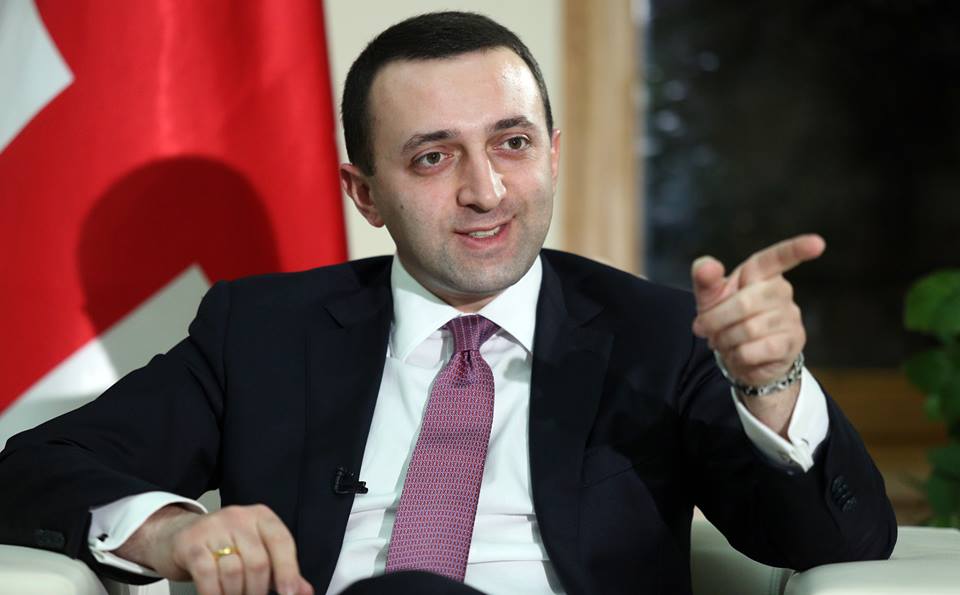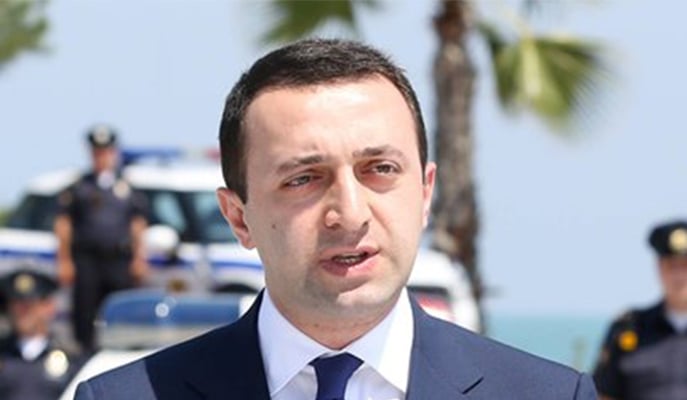Product of Georgia, a new governmental programme, was presented on 20 October. The aim of the programme is to support micro and small entrepreneurship. Prime Minister of Georgia, Irakli Gharibashvili, attended the presentation of the programme and spoke about its goals: “The Government is presenting a programme for developing local production. A hundred abandoned factories have been put up for sale. We are letting businesses purchase state-owned property for the symbolic price of GEL 1. The business receives a 30% guarantee from the state for repaying the bank loan, 10% of which will be covered by the state which means that entrepreneurs only have to pay 1%-2% over two years.”
FactChecktook interest in the abovementioned state programme and studied its details.
Product of Georgia was first presented on 19 May 2014. The Ministry of Economy and the Ministry of Agriculture of Georgia are the programme’s implementers. The main goals of Product of Georgia are to facilitate entrepreneurship in Georgia, encourage and facilitate local production (especially in the underdeveloped regions), create jobs and increase the country’s export potential. The programme includes three components:
- Availability of funds;
- Availability of infrastructure (real estate);
- Consultative service.
Let us thoroughly examine each component of the Product of Georgia programme. Firstly, financial support means:
- Co-financing of the credit interest in the first two years by 10%;
- Collateral insurance – not more than 30% of the credit amount for two-to-four years.
Secondly, infrastructural support includes:
- Handing over state-owned property free-of-charge (state-owned real estate including land and buildings);
- Supporting the introduction of innovations and modern technologies.
Thirdly, the consultative service includes:
- Training (marketing, sales, business planning, finding export markets, requests in the export market), improving entrepreneurship skills, production quality management and other spheres;
- Supporting the introduction of innovations and modern technologies.
The components of the programme are accessible both together and one-by-one. Supporting the development of production-oriented industries is also set to take place within the framework of the programme. Agriculture is another priority direction as well. Product of Georgia will operate with a budget of GEL 46 million. Of this amount, GEL 30 million will be spent on producing and recycling agricultural production and GEL 16 million will be targeted for industrial production.
The terms of financial aid for industry are as follows:
|
Loan Amount |
Bank Rate |
Co-financing |
|
USD 150,000-500,000 |
13% |
10% |
|
USD 500,001-1,000,000 |
12% |
10% |
|
USD 1,000,001-2,000,000 |
11% |
10% |
The terms of financial aid for agriculture are as follows:
|
Loan Amount |
Bank Rate |
Co-financing |
|
USD 600,000-1,000,000 |
12% |
10% |
|
USD 1,000,000-2,000,000 |
11% |
10% |
A borrower working in industry is required to repay 1%-3% per year whilst the government pays 10%. A borrower working in agriculture is required to repay 1%-2% whilst the government pays 10%.
Product of Georgia’s infrastructural support includes the availability of real estate with entrepreneurs being handed over state-owned property for the symbolic price of GEL 1. The list of this property is available on the website of the National Agency of State Property.As we were told via the Product of Georgia hotline, the list includes the territories and buildings of abandoned factories. As of today, the National Agency of State Property’s property list includes 90 facilities nationwide.
Twenty-five projects have been approved during the first five months since the launch of the programme. Fourteen entrepreneurs have received preferential loans and 11 entrepreneurs have been handed over property for the GEL 1 price. Thirty-four projects are currently being discussed. Information about Product of Georgia-funded facilities is given on the programme’s Facebook page. Some of these include: LTD AG Telekom which received a preferential loan of USD 606,250 for constructing an electric and micro electric factory. The facility will be built in Rustavi and employ 100 people; LTD Dekori, which received a preferential credit totalling USD 150,000 for creating a sand factory in Kutaisi that will employ 120 people; LTD Made in Georgia #1 received a loan of USD 1 million for creating a packing materials factory. The factory will employ nearly 60 people.
It should be noted that handing over state-owned ventures for real or symbolic prices was previously taking place as well. More than 1,000 ventures were privatised from 2005 to 2012. The privatisation process was being carried out gradually and so the 100 factories mentioned by the Prime Minister did not appear on the list of privatised ventures.
Conclusion
The Product of Georgia programme aims to support Georgian entrepreneurs. The programme consists of three components: financial aid, infrastructural support and consultative service. Entrepreneurs can receive a preferential credit within the framework of the programme with an interest rate of 1%-3% for the first two years. They can also receive state-owned property for the symbolic price of GEL 1. Five months have passed since the start of the programme and 25 projects have been approved.
It is worth noting that a similar policy was also being implemented in previous years. Provided that the entrepreneur presents a business plan and is committed to invest, the state is prepared to hand over a property or a venture for the symbolic price of GEL 1. We conclude that Mr Gharibashvili’s statement is MOSTLY TRUE.





 “A hundred abandoned factories have been put up for sale. We are letting businesses purchase state-owned property for the symbolic price of GEL 1.”
“A hundred abandoned factories have been put up for sale. We are letting businesses purchase state-owned property for the symbolic price of GEL 1.”



